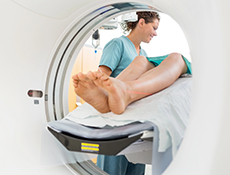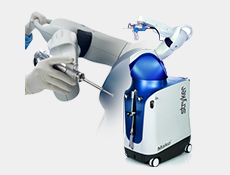The treatment for common hip disorders depends on the specific condition. Options may include physical therapy, pain management, anti-inflammatory medications, and in some cases, surgical intervention. It's crucial to consult with a healthcare professional for an accurate diagnosis and personalised treatment plan based on the underlying issue.

Non-Surgical Treatment Options
Not all cases of hip pain require surgical treatment. Here are some of the types of treatments that your doctor may recommend to manage your pain and improve your quality of life.
Lifestyle Changes
Modifying activities to avoid high-impact exercises and making lifestyle changes like weight loss can help decrease pain and stress on the hip joint in arthritis.
Physiotherapy
Physiotherapists can help lessen your pain by teaching better posture and body mechanics for your day-to-day activities, like getting in and out of a chair. They can also provide guidance on using assistive tools such as canes or walkers to reduce hip stress. Additionally, they may recommend specific walking and strengthening exercises based on your individual anatomy, joint function, and the progression of your condition.
Medication
Over-the-counter or prescription anti-inflammatory medicines, vitamins and mineral supplements, and injections such as corticosteroid injections, hyaluronic acid injections, platelet-rich plasma injections, and immunosuppressive or biologic medicines can help control pain and inflammation.
Surgical Treatment
We have a full range of treatment and surgical options to suit every patient's needs. These include implant technology, robotic technology and a variety of surgical techniques.
Some of the surgical services we offer include:
Total Hip Replacement
If non-surgical treatments like physical therapy and medication don’t bring relief, your doctor may recommend hip replacement. Considered one of the most successful orthopaedic innovations of its time, hip replacements have been performed for more than 125 years. In fact, the procedure is performed more than 300,000 times every year in the U.S. The procedure involves removing the arthritic ends of bone and damaged cartilage and replacing them with prosthetic implants designed to move like a healthy hip.
What Happens During Surgery?
During total hip replacement (also called total hip arthroplasty), a surgeon removes the arthritic ball end of the femur (top of thigh bone) and inserts a metal component (a stem) into the bone. The surgeon also replaces the hip socket with an acetabular cup lined with durable polyethylene plastic.
Even with total hip replacement, you and your doctor have options. Talk to your doctor about robotic-assisted surgery and muscle-sparing approaches to hip replacement that are designed to minimize the impact of surgery on your soft tissue and bone.
The Alternative to Traditional Total Hip Replacement Surgery:
Mako Total Hip Robotic-Arm Assisted Surgery
If you’re one of the millions of global citizens suffering from pain caused by arthritis or an injury to the hip, and you haven’t experienced adequate relief with conservative treatment options, Mako Robotic-Arm Assisted Surgery might be right for you.
In clinical studies, Mako resulted in:
- More accurate placement and alignment of hip implants based on the surgical plan.
- Less likelihood of hip dislocation.
- Reduced blood loss.
- Replication of the feeling of a natural hip.
- Preservation of healthy bone.
How It Works

Plan
Personalized surgical plan
Prior to surgery, a CT scan of your hip joint is taken in order to generate a 3D virtual model of your unique anatomy. The 3D model helps your doctor see things he or she can’t typically see with an x-ray alone. This additional information helps your doctor determine the optimal size, placement and positioning of your implant.

Assess
Range-of-motion assessment
Throughout your procedure, Mako provides real-time data to your surgeon. This allows them to continuously assess the movement and tension of your new joint, and adjust your surgical plan if desired.

Prepare
Arthritic bone removal
In the operating room, your surgeon guides Mako’s robotic arm to remove the arthritic bone and cartilage from the hip. A virtual boundary provides tactile resistance to help the surgeon stay within the boundaries defined in your surgical plan.

Insert
Implant placement
As the surgeon prepares to place the implant into its final position, the robotic-arm guides the implant at the desired angle defined in the surgical plan. This helps ensure the placement and alignment of the implant are performed according to plan.
Mako Total Hip Replacement is for people with:
- Severe hip pain or stiffness resulting from: non-inflammatory degenerative joint disease (including osteoarthritis, traumatic arthritis, or avascular necrosis), rheumatoid arthritis or post-traumatic arthritis
- Those who haven’t experienced adequate relief with conservative treatment options, like bracing, medication or joint fluid supplements
Hip Arthroscopy
If non-surgical treatments like physical therapy or medication do not bring relief, your doctor may recommend hip arthroscopy, a minimally invasive outpatient procedure that uses small incisions to access the hip joint. Hip arthroscopy is used to diagnose and treat a wide range of hip problems, including impingement and labral/cartilage tears, and it may help relieve painful symptoms.



